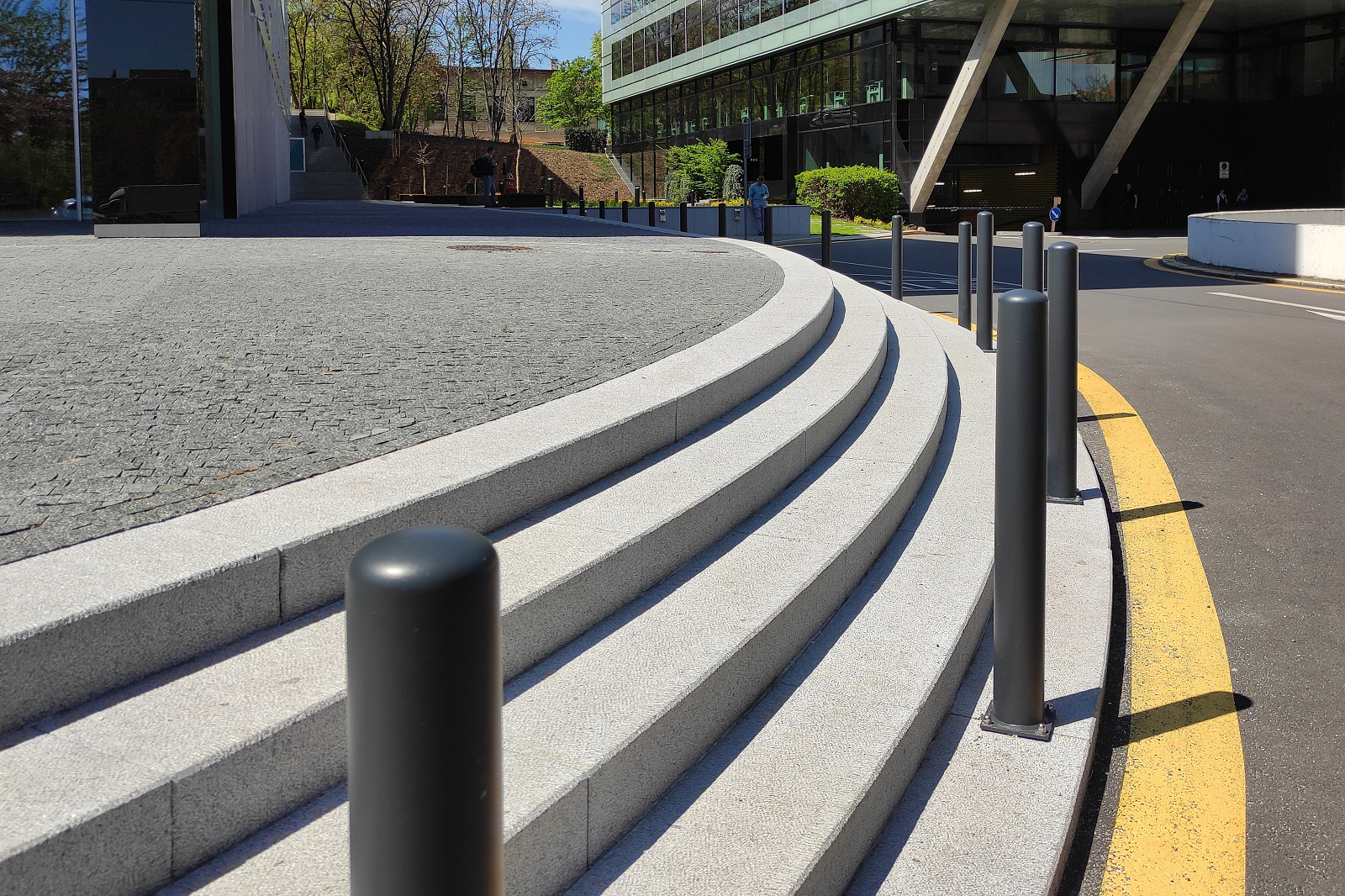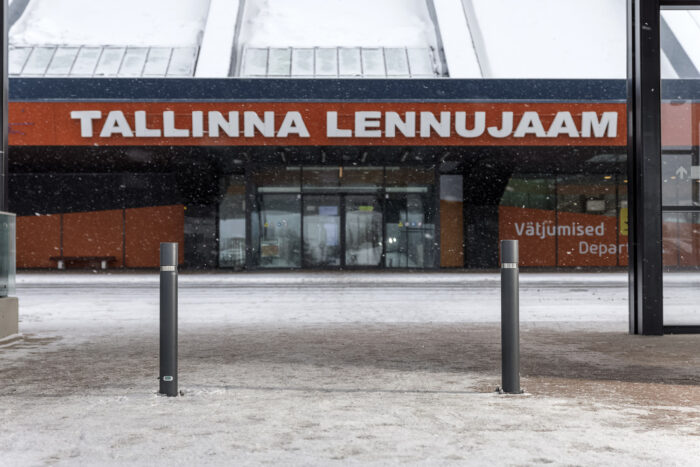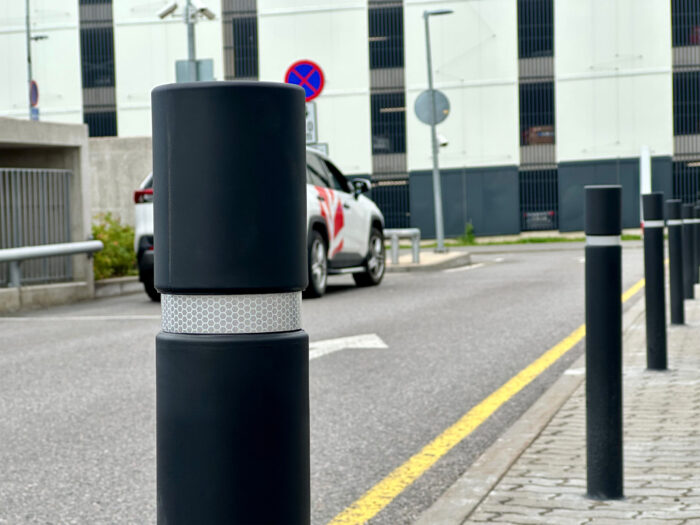
A safe urban space is more than just streets and buildings – It is an environment where everyone should be able to feel safe and comfortable. One key to creating a safe and functional urban space is smart urban furniture, which not only complements the surroundings aesthetically, but also ensures greater security and comfort.
This month we want to share thoughts on how urban furniture can help create a safe and cosy environment. Let us focus on bollards and street barriers. Urban planning is like art and science of making cities a better place for all of us. By helping create an urban space where people can move freely and safely, we contribute to making our cities vibrant and modern. We use different bollards!
What are bollards and barriers?
Bollards and street barriers are an important part of urban furniture, as they help regulate traffic and ensure safety in urban space. In addition, they are also stylish and complement urban spaces. Bollards and street barriers can be found in many different places, from driveways and parking lots to light traffic roads and pedestrian areas. These elements help clearly define areas where vehicles should not drive and thus ensure the safety of pedestrians and cyclists. In addition, they play an important role in areas with limited access, such as pedestrian streets, markets, and courtyards. It is also a good idea to use these in parking lots or other narrow places to protect buildings from cars.
The advantages of using bollards when designing the urban space:
- Traffic safety: Restrict access to certain areas, reducing the risk of traffic accidents.
- In addition to their practical purpose, bollards and street barriers are part of modern and attractive urban design. They are not only functional, but also stylish, making urban spaces more inviting and enjoyable for everyone.
- Security: Protect buildings and other areas from illegal entry and vandalism
- Aesthetic value: Thanks to different design options, they add aesthetic value to the urban space.
- In addition to their practical purpose, bollards and street barriers are part of modern and attractive urban design. They are not only functional, but also stylish, making urban spaces more inviting and enjoyable for everyone.
What are the different types of bollards?
Bollards can differ in shape, size, material, and function and fulfil various specific security needs. Bollards can simultaneously perform the function of a bicycle holder, such as the Pollar Croc. This solution is especially popular because it fulfils two functions!
The choice of bollards depends on its environment – are the surrounding buildings historic, modern, particularly elegant or minimalist? A bollard should also have a similar style. The simplest bollards are, for example, as the name suggests, Pollar Simple. A more robust and classic option is the concrete Pollar Tapia. Additionally, there are areas where bollards that can be lowered into the ground, such as the Pollar Teleskoop, may be required. Pollar Trajana, reminiscent of a column, is suitable in front of historic buildings, and shiny Pollar Inox is suitable for modern environments.
Aesthetically designed bollards help add character and signal that security is taken care of in the urban space.

Where can bollards be used?
Different types of bollards are suitable for different areas, from city streets and parking lots to pedestrian areas, where they support traffic safety and keep the urban space organized.
- City streets and intersections – Bollards mainly find their place along the streets, regulating traffic between pedestrians and cars. In this way, clearly defined areas where vehicles should not move can be ensured. This, in turn, reduces the risk of traffic accidents and ensures the safety of pedestrians and cyclists. Recently, a lot of barriers separating the bicycle path from the road, can be seen in the urban space.
- Shopping malls and business districts – shopping malls and business districts can have heavy traffic. Here, bollards act not only as traffic barriers, but also as security providers, preventing incorrect parking and traffic jams. Their aesthetic design also contributes to the modern and inviting look of the area.
- Promenades – Pedestrian streets and promenades are places where people gather and move freely. Bollards clearly define pedestrian areas, ensuring safe movement. At the same time, they add visual appeal to the urban space, contributing to community dynamics.
- Courtyards and Marketplaces – Courtyards and marketplaces are places where events are often held, or people gather. Bollards act as barriers here, preventing accidental entry of vehicles and ensuring a safe environment. They can also be a design element, adding character to the urban space.
- Parking lots and Highways – Bollards help define parking areas and direct traffic, reducing confusion and increasing safety. Different types of bollards, such as telescopic bollards, can be ideal for separating parking zones.
- Bicycle parks – The recent trend is to use bollards or bike racks to create a two in one solution – a roadblock and a bicycle park!

Materials, installation, and maintenance
The durable material of the bollard is particularly important for it to fulfil its protective function. The bollard is usually made of concrete, iron, metal, or other steel structure, which also allows you to choose different colour finishing options. The flexible bollards are made of fade resistant Cauflex material.
A particularly reliable solution is the Pollar Hospitalet, which has been decorating and protecting urban spaces for years. It is available with five different functions: portable, flexible, poured in concrete, with anchor bolts and hidden fixing. Most of the bollards are primarily concreted or anchored with anchor bolts. Attention must be paid to the fact that bollards can only be installed in hard soil. There must be no moisture in the ground when the bollard is lowered into the ground.
Choosing and installing the right bollard is actually very easy! If you need bollards for your urban space, contact us at: info@dambis.ee!